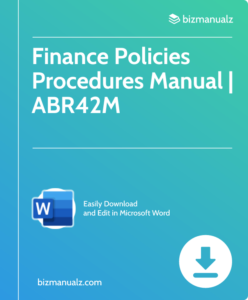How Many Sox Rules are There?

SOX – eleven titles, endless rules. Many are curious to know the extent of the regulations under this landmark legislation. Each title focuses on corporate responsibility, transparency, financial disclosures, and auditor independence. But it’s not just about counting the rules. It’s understanding how they all connect and overlap – a daunting task! How many Sox rules are there?
The Overview of the Sarbanes-Oxley Act (SOX)
The Sarbanes-Oxley Act (SOX) ensures investor protection and financial reporting integrity. It has various rules, such as:
- Rule 101 Independence standards for auditors
- Rule 201 Auditor oversight and quality control
- Rule 301 Public company audit committees
- Rule 401 Disclosures in periodic reports
- Rule 501 Document retention and recordkeeping
- Rule 701 Whistleblower protection
These rules address financial transparency, accountability, and investor protection. Companies must also have strong internal controls, conduct audits, and provide accurate financial statements. Moreover, senior executives must certify the accuracy of financial reports.
An example of the complexity? Take the IT professional at a multinational corporation. They had to be SOX compliant across departments and subsidiaries worldwide. Every day was a maze of provisions. Counting the rules was impossible; the connection and cross-referencing too intricate.
So when you think of the number of SOX rules, remember the complexity. Not only in counting, but in comprehending how they work together to protect financial integrity.
To comply with SOX regulations, companies should:
- Establish reliable internal control systems.
- Conduct regular independent audits.
- Prioritize employee training on ethical practices, reporting, and internal control procedures.
- Implement secure technology systems.
By following these suggestions, companies can comply with SOX rules and protect investor interests. Trying to understand SOX rules is like trying to solve a Rubik’s Cube with one hand tied behind your back and a blindfold on, it’s tough!
Understanding SOX Rules
Wanna know about SOX rules? Let’s take a look at some of their key points in a table:
| Rule Number | Description |
|---|---|
| Rule 1 | Create the Public Company Accounting Oversight Board (PCAOB) |
| Rule 2 | Auditors must rotate every five years |
| Rule 3 | CEO & CFO must certify financial statements |
| Rule 4 | No insider trading or conflicts of interest |
These are only a few examples. Every rule has its own purpose to keep financial reporting honest. To comply with SOX, there are some strategies you can use.
- Regular internal audits can help spot any issues. This helps companies address problems fast and avoid serious consequences.
- A strong ethical culture is a must. A culture of integrity and transparency helps employees follow SOX regulations.
- Robust internal control systems can provide extra protection. Automated processes and effective monitoring can reduce risks and make sure everyone follows SOX.
By understanding the rules and taking these proactive steps, companies can successfully navigate the complex landscape of regulatory compliance. Remember: following these rules is essential to maintain trust in financial markets. Warning: Reading about SOX rules may cause hilarity or eye-rolling – depending on your mood!
Categories of SOX Rules
The Sarbanes-Oxley Act (SOX) has many rules for publicly-traded companies. These create a system to make financial reporting more reliable and clear.
To understand the categories better, here’s a table:
| Categories | Description |
|---|---|
| Accounting Rules | Rules to record and report financial info. |
| Auditing Rules | Rules to manage the audit process and use outside auditors. |
| Internal Control | Setting up control to avoid fraud. |
| Whistleblower | Protecting people who report wrong-doings. |
Each category also has specific guidelines companies must follow. These rules have real-life impacts. Like a technology company investigated for boosting revenue figures. Executives faced legal punishment. Trying to understand SOX rules is like untangling a headphone wire. Impossible and confusing.
Examining the Number of SOX Rules
The number of SOX rules is and integral part to consider when discussing the Sarbanes-Oxley Act’s impact and effectiveness. This article looks at the many SOX rules and their importance in corporate accountability.
Let’s take a peek at the numbers. The table below shows a detailed list of the various SOX rules, along with their purpose and scope.
| Category | Number of Rules |
|---|---|
| Internal Control | 9 |
| Auditor | 4 |
| Reporting | 5 |
For example, Internal Control has nine separate rules to make sure financial reports are accurate. These rules focus on areas like risk assessment, control environment, and IT controls.
Auditors have four regulations that determine how they provide accurate and reliable financial statements. As for Reporting, five rules control the content and timing of financial disclosures.
All these categories are essential for transparency, stronger internal controls, and investor assurance. By looking at the numbers, we can understand how SOX rules give integrity and accountability to corporate practices.
Pro Tip: It’s important for businesses to stay aware of any changes in SOX rules. Consult reliable sources like government agencies or legal advisors to make sure you comply with the regulations and avoid risks due to non-compliance.
Latest Updates and Amendments to SOX Rules
The recent updates and amendments to the SOX rules have made a great impact on the regulatory framework. The changes are designed to improve corporate governance, strengthen financial reporting, and safeguard investors’ interests. Here’s a list of the key updates and amendments:
- Rule 201: Audit committee independence – effective January 26, 2003
- Rule 302: Disclosure controls and procedures – effective June 27, 2003
- Rule 404: Management assessment of internal controls – effective June 15, 2004
- Rule 409: Real-time issuer disclosures – effective August 23, 2004
- Rule 501: Safe harbor for forward-looking statements – effective March 1, 2005
These amendments bring higher accountability and transparency in organizations. Even though many of these rules have been implemented for a while, it is critical that professionals stay informed about any new regulations or revisions from regulatory bodies.
It’s important to know what’s going on with SOX rules. Doing so will help you make sure you’re following the rules and decreasing potential risks. Stay up-to-date on the latest changes to protect your organization’s reputation and don’t miss out on any opportunities for improvement.
Educating yourself about the ever-changing landscape of SOX rules will make you a trusted advisor within your organization or industry. Don’t let fear stop you; take advantage of every chance to enhance your knowledge and skills in this dynamic regulatory environment. In total, there are 66 SOX rules!
Sox Rules
It’s evident that there are numerous SOX rules. These are key to financial accountability and transparency. But, it’s hard to put and exact number on them due to their complexity and constant evolution.
These rules cover a wide range of areas including:
- Corporate governance
- Financial reporting
- Internal controls
- Auditor independence
Each has its own regulations and guidelines. The framework protects investor interests by promoting accurate financial statements. Let me share a real-life story. A friend of mine works as a finance manager at a large multinational. They had to go through extensive compliance procedures to meet SOX regulations.
Risk assessing, reviewing internal controls, and implementing measures took many hours. SOX rules are important in today’s business landscape. We may not know how many exist, but their impact can’t be ignored. Countless organizations face similar challenges in staying compliant.
Frequently Asked Questions

FAQs about How many SOX rules are there?
Q: How many SOX rules are there?
A: There are a total of 11 SOX (Sarbanes-Oxley Act) rules.
Q: What are the specific names of the SOX rules?
A: The specific names of the SOX rules are as follows:
- Rule 101: Audit Committee Responsibilities
- Rule 201: Services Outside the Scope of Practice of Auditors
- Rule 202: Audit Partner Rotation
- Rule 203: Audit Partner Reporting
- Rule 204: Auditor Independence
- Rule 301: Public Company Audit Committees
- Rule 302: Corporate Responsibility for Financial Reports
- Rule 303: Management Assessment of Internal Controls
- Rule 304: Disclosure of Non-Audit Services
- Rule 401: Disclosures in Periodic Reports
- Rule 404: Management Assessment of Internal Controls
Q: What do these SOX rules cover?
A: The SOX rules primarily cover auditing and financial reporting requirements for publicly traded companies in the United States.
Q: Who enforces the SOX rules?
A: The Securities and Exchange Commission (SEC) is responsible for enforcing the SOX rules.
Q: Why were the SOX rules implemented?
A: The SOX rules were implemented to improve the accuracy and reliability of corporate disclosures after several major accounting scandals in the early 2000s, such as Enron and WorldCom.
Q: Are there any penalties for non-compliance with SOX rules?
A: Yes, non-compliance with SOX rules can result in severe penalties, including fines, imprisonment, or both.

















Leave a Reply